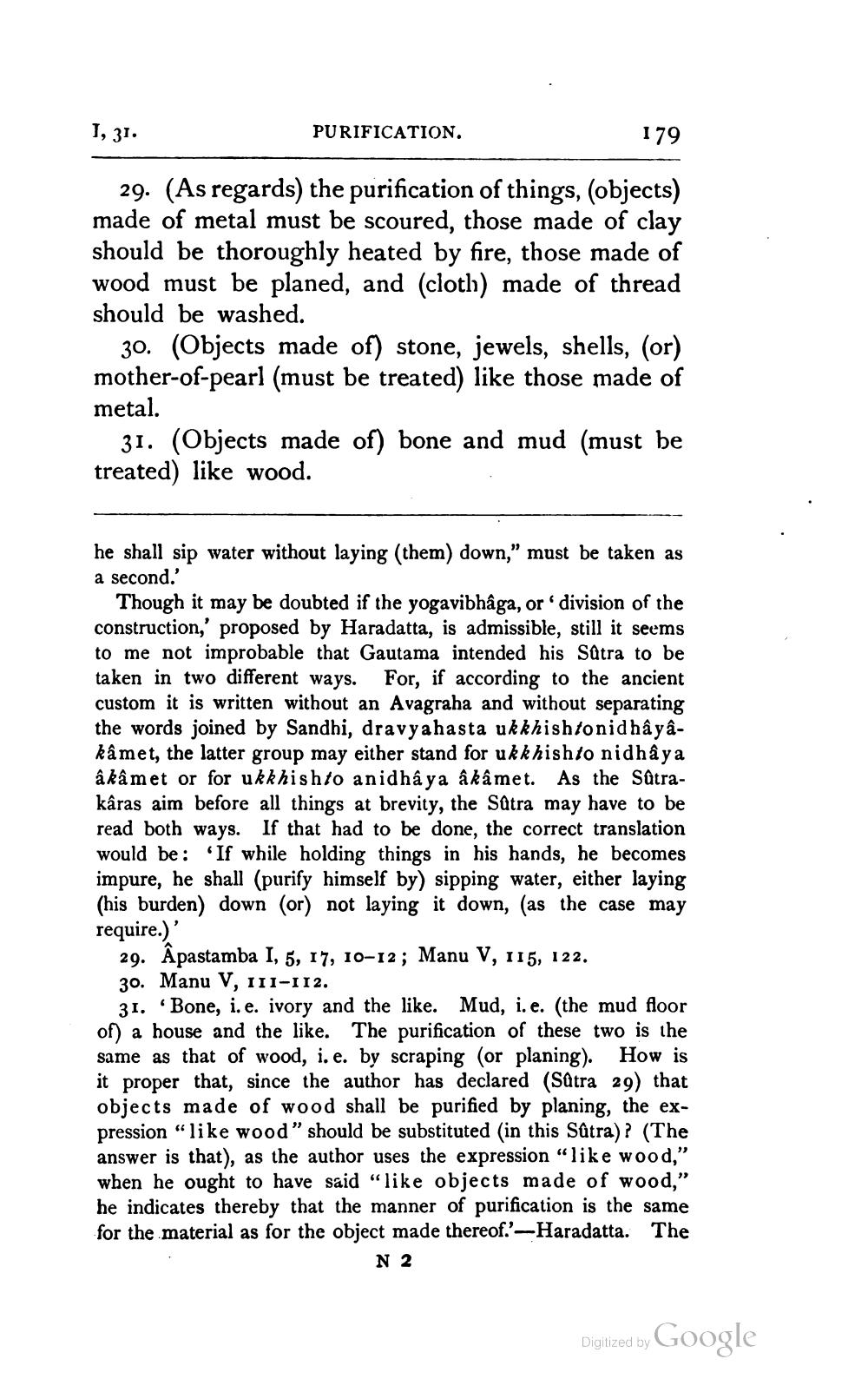________________
1, 31.
PURIFICATION.
179
29. (As regards) the purification of things, (objects) made of metal must be scoured, those made of clay should be thoroughly heated by fire, those made of wood must be planed, and (cloth) made of thread should be washed.
30. (Objects made of) stone, jewels, shells, (or) mother-of-pearl (must be treated) like those made of metal.
31. (Objects made of) bone and mud (must be treated) like wood.
he shall sip water without laying (them) down," must be taken as a second.'
Though it may be doubted if the yogavibhaga, or division of the construction,' proposed by Haradatta, is admissible, still it seems to me not improbable that Gautama intended his Satra to be taken in two different ways. For, if according to the ancient custom it is written without an Avagraha and without separating the words joined by Sandhi, dravy a hasta ukkhishtonidhâyâkamet, the latter group may either stand for ukkhishto nidhaya â kâ met or for ukkhish to anidha ya âkâmet. As the Sætrakâras aim before all things at brevity, the Sätra may have to be read both ways. If that had to be done, the correct translation would be: "If while holding things in his hands, he becomes impure, he shall (purify himself by) sipping water, either laying (his burden) down (or) not laying it down, (as the case may require.)
29. Âpastamba I, 5, 17, 10-12; Manu V, 115, 122. 30. Manu V, 111-112.
31. Bone, i.e. ivory and the like. Mud, i.e. (the mud floor of) a house and the like. The purification of these two is the same as that of wood, i.e. by scraping (or planing). How is it proper that, since the author has declared (Satra 29) that objects made of wood shall be purified by planing, the expression “like wood" should be substituted in this Sûtra)? (The answer is that), as the author uses the expression “like wood," when he ought to have said "like objects made of wood," he indicates thereby that the manner of purification is the same for the material as for the object made thereof.'-Haradatta. The
N 2
Digitized by Google




